How can I reduce my use of single serving milk pots?
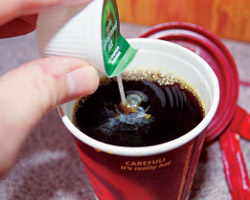 We’ve had an email from Leann:
We’ve had an email from Leann:
I have to travel a lot to work and in a day can easily get through a dozen single serving milk pots – on the train, at meetings, at hotels etc. I’m not interested in recycling them, I want to stop needing to use them! Any ideas?
Good question and it is much better to reduce rather than recycle so hopefully we’ll be able to help you with some ideas.
You could take some of milk from home with you in a little bottle – depending on the temperature, that might only be good for the outward journey — it might be like adding butter to your drinks later in the day! In the winter it’ll last longer though – and if your room is without mini-bar/fridge, don’t forget the old student/frugaleer tricks of leaving bottles of milk in a sink filled with cold water or out on a window sill.
If it ripens too quickly like that, dried milk powder or “non-dairy creamer” (Coffee mate etc) may be an alternative since they won’t go off – some milk powders need reconstituting first though so that might be a bit of a faff on the train.
It might be easiest to find a type of tea/coffee that you can enjoy without milk – for example, a lighter black tea (Earl Grey for example) if you’re not into fruit/herbal teas — then that would avoid the milk question altogether. Carrying your own tea bags around is pretty easy since they’re small and lightweight – and it would probably look less odd in a meeting if you whipped out a preferred teabag rather than milk powder and a whisk.
Any other suggestions for Leann?



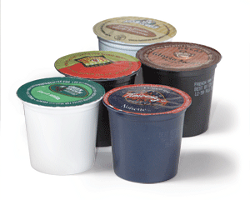 From
From 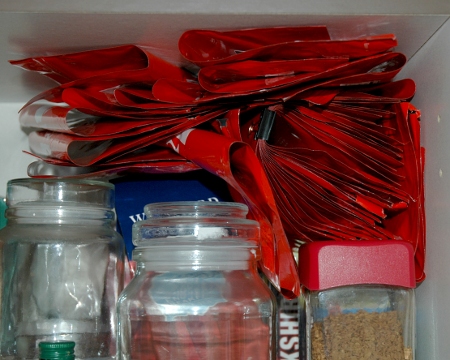
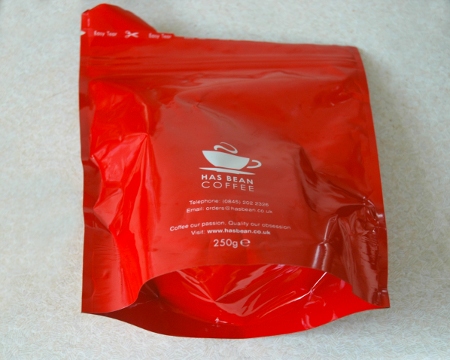
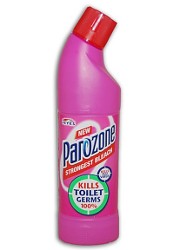 Inspired by clearing out of bathroom cupboards this morning, I thought we’d have a cleaning themed week here on Recycle This. We’ve covered various cleaning related things in the past –
Inspired by clearing out of bathroom cupboards this morning, I thought we’d have a cleaning themed week here on Recycle This. We’ve covered various cleaning related things in the past – 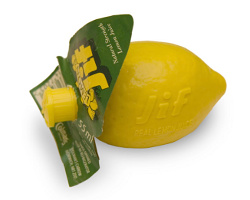 For some reason, our local supermarket has stopped selling lemon juice in sensible containers and only sells it in plastic lemon-shaped bottles now. (Not actually Jif lemons but similar, with a flat bottom.)
For some reason, our local supermarket has stopped selling lemon juice in sensible containers and only sells it in plastic lemon-shaped bottles now. (Not actually Jif lemons but similar, with a flat bottom.)














